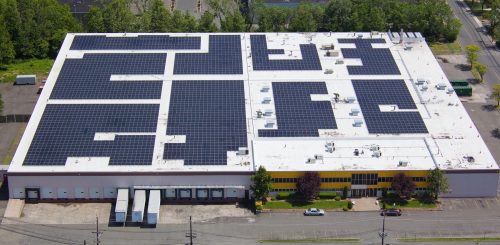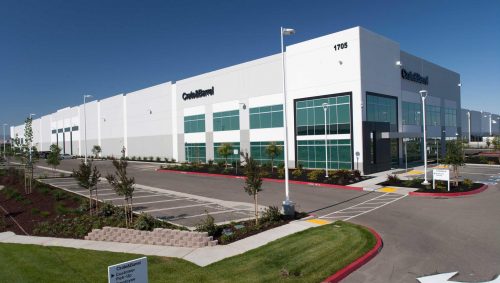When Al Gore’s “An Inconvenient Truth” debuted in 2006, the concept of “sustainability” and “green” initiatives became more commonplace in both individual and corporate environments. The main idea behind it was that, as humans, we had a responsibility to care for our environment and minimize environmental damages. In real estate, the first concepts of renewable energy and sustainable development appeared to be costly compared to traditional building methods. Yet, firms still began to utilize renewable energy and sustainable development as a way to “save the environment”. In the 11 years since the insightful film came out, sustainable development has seen leaps and bounds of innovation and growth, with costs dropping dramatically and new technology flooding the sustainable marketplace. This can especially be seen in industrial real estate, an asset class that has seen rapid growth in development and is ripe for innovation. Some firms have already begun to implement green initiatives with great success. Thus, it is important to be aware of ways that “going green” in industrial can be beneficial, not only in environmental responsibility, but also as an economic opportunity.

Photo Credits: LPS Industries
LEED certification has traditionally been difficult to implement in industrial real estate due to the layout of the buildings- large open spaces, with a high density of employees. It is much more difficult to heat up or cool down a building with roofs as high as 40 feet, compared to other commercial building types with lower ceilings and more ventilation outputs. But some major industrial firms have already taken initiative to becoming more sustainable, for both economic and for environmental responsibility reasons. For examples of industrial firms utilizing sustainability to benefit economically, look no further than Prologis. Prologis has kept track year-in and year-out of their sustainability initiatives through their “Sustainability Report”[1]. The initiatives are not, however, just for saving the environment. Within the 2016 report, CEO Hamid Moghadam includes a line that “At Prologis, we are convinced that taking a long-term view on everything we do, from the impact our facilities have on the environment to the quality of our corporate governance, translates into improved long-term financial performance and investor returns.” The report keeps track of all the sustainability efforts the firm has taken. Some key numbers from the 2016 report include:
- 78% of the total operating portfolio has efficient lighting
- 36% of the total operating portfolio has 36 cool or reflective roofing
- 35% of the total operating portfolio is more energy efficient by using LED versus traditional warehouse lighting
- 165 megawatts of total solar energy generating capacity
- 18 megawatts of solar installation in 2016
- 233 building certifications

Prologis Park Tracy is a LEED Gold certified warehouse in Central Valley, CA
Photo Credit: Prologis
How does the firm, and other companies, create value from sustainability? There are many creative ways to do so which can decrease the underwritten payback period for a sustainable development. One argument to be made is that having cost-cutting measures, such as low-flow toilets or solar panel systems, increase competitive advantages in leasing to tenants. Many tenants of industrial leases have reimbursables to pay, typically electrical, water, or other utilities. As a tenant makes choices between two logistic centers, it can be competitively advantageous to offer lower utility bills, and sometimes landlords can even charge a premium rent. In fact, one study published by the NAIOP Research Foundation found that “Lease rates were 5-10% higher for certified structures than for their control sample (within their multivariate context), while occupancy rates were 3-4% higher”[2].
Beyond improving the tenants bottom line, sustainability measures also have benefits for the owner that should be considered. The federal solar tax credit, also known as the investment tax credit (ITC), is a 30 percent deduction a business can take on installing a solar system onto property. The 30 percent deduction is a percentage of the total cost to install the solar system, and the amount is not capped. Because of this, many businesses experiencing high taxation can greatly benefit from solar installation. Most sustainable projects also enjoy the benefit of MACRS depreciation, which depreciates the asset at a faster rate.
Being green has many benefits, both financially and in terms of environmental responsibility. Industrial owners who had been previously scared off by the high prices of “going green” should take a look at the current green climate, and reassess whether it is viable for them to take the plunge.
[1] https://prologis.getbynder.com/m/0a6fa29618a465f4/original/Prologis_2016_SustainabilityReport.pdf
[2] https://www.naiop.org/~/media/Research/Research/Research%20Reports/The%20Political%20Economy%20of%20Green%20Industrial%20Warehouses/ARESThePoliticalEconomyofGreenIndustrialWarehouses.ashx
